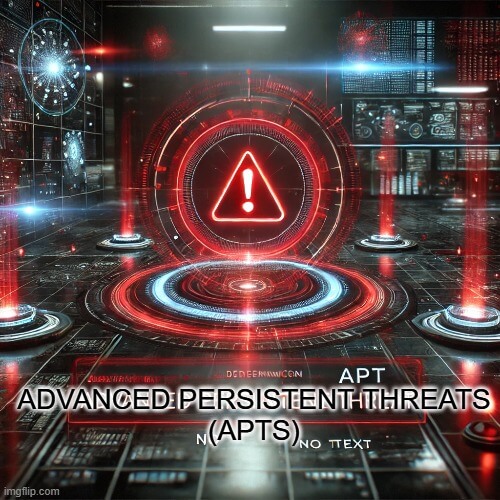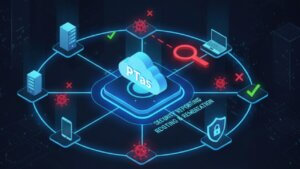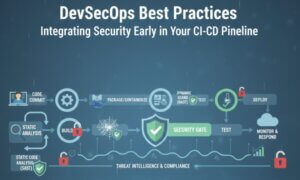Advanced Persistent Threats (APTs) are among the most sophisticated cyber threats that organizations face today. Unlike traditional malware, APTs are highly targeted, stealthy, and persistent, often designed to evade detection for extended periods. Cybercriminals behind APTs use sophisticated techniques such as zero-day exploits, polymorphic malware, and fileless attacks to infiltrate networks and steal sensitive data.
To effectively combat APTs, organizations need advanced threat detection mechanisms that go beyond traditional antivirus and signature-based defenses. Malware sandboxing plays a crucial role in identifying and mitigating APTs by providing a controlled environment where suspicious files and activities can be analyzed in real-time. This blog explores how malware sandboxing helps detect APTs, its benefits, key features, and best practices for implementation.
Table of Contents
Understanding Advanced Persistent Threats (APTs)

APTs are characterized by:
Stealth and persistence – They remain undetected for long periods, using advanced evasion techniques.
Sophisticated attack vectors – APTs leverage spear-phishing, supply chain attacks, and zero-day vulnerabilities.
Targeted approach – Unlike generic malware, APTs are designed for specific victims, such as government agencies, financial institutions, or critical infrastructure.
Multi-stage attacks – APTs follow a well-planned attack cycle, from initial infiltration to data exfiltration.
The Role of Malware Sandboxing in Detecting APTs

A malware sandbox is an isolated, controlled environment where suspicious files, URLs, and scripts can be executed safely to observe their behavior. Sandboxing helps detect APTs by:
Identifying Hidden Threats – Analyzing the behavior of files in a secure environment reveals malicious intent that traditional detection methods might miss.
Detecting Zero-Day Exploits – Sandboxes can uncover unknown malware that exploits unpatched vulnerabilities.
Analyzing Fileless Attacks – Behavioral analysis helps identify malicious activity even when no traditional malware files are present.
Monitoring Command and Control (C2) Communications – APTs often establish connections with remote servers; sandboxes detect and block such network activity.
1. Behavior-Based Detection
Unlike traditional signature-based detection, sandboxes rely on behavioral analysis to detect APTs. This includes:
Monitoring API calls and system interactions
Detecting unauthorized privilege escalation
Identifying suspicious file modifications and registry changes
2. AI-Driven Anomaly Detection
Many modern malware sandboxing solutions integrate machine learning (ML) and artificial intelligence (AI) to recognize patterns indicative of APT activity. AI-driven sandboxes can:
Detect malware variants that exhibit minor modifications.
Identify deviations from normal network behavior.
Improve detection of polymorphic and obfuscated malware.
3. Threat Intelligence Correlation
Advanced sandboxes integrate with Threat Intelligence Platforms (TIPs) to correlate malware samples with known APT campaigns. This enhances detection by:
Matching analyzed malware against global threat intelligence databases.
Identifying attack patterns linked to specific threat actors.
Providing actionable insights for incident response teams.
4. Advanced Evasion Detection
APTs are designed to evade detection by:
Detecting virtual environments and sandbox execution.
Using time-delayed execution to bypass rapid analysis.
Encrypting or packing payloads to avoid behavioral analysis.
Sophisticated sandboxes counter these techniques by:
Simulating real-user interactions to deceive evasive malware.
Monitoring for delayed execution patterns.
Using memory forensics to extract hidden payloads.
Key Features of Malware Sandboxing for APT Detection
The effectiveness of malware sandboxing depends on its capabilities. Here are essential features to look for:
1. Dynamic and Static Analysis
Static analysis: Examines file structure, metadata, and embedded code before execution.
Dynamic analysis: Runs the file in an isolated environment to observe real-time behavior.
2. Multi-OS and Application Support
Supports Windows, Linux, macOS, and mobile platforms.
Analyzes scripts, executables, Office documents, and PDFs.
3. Deep Packet Inspection (DPI)
Monitors network traffic generated by suspected malware.
Detects communication with known malicious IP addresses.
4. Integration with SIEM and EDR
Connects with Security Information and Event Management (SIEM) systems.
Works with Endpoint Detection and Response (EDR) tools for automated threat mitigation.
Implementing Malware Sandboxing for APT Detection
Step 1: Choose the Right Sandbox Solution
When selecting a malware sandbox, consider:
Accuracy in threat detection – Ability to detect zero-day and evasive threats.
Scalability – Supports large-scale enterprise deployments.
Cloud vs. On-Premise – Cloud sandboxes offer scalability, while on-premise solutions provide greater control.
Step 2: Automate Sample Submission
Automate the process of sending suspicious files to the sandbox using:
Email security solutions (to scan attachments for APT indicators).
Web filtering tools (to analyze malicious URLs).
SIEM and EDR integration (for seamless incident response).
Step 3: Monitor and Analyze Results
Security teams should:
Review sandbox reports for detailed threat intelligence.
Identify Indicators of Compromise (IoCs) such as malicious hashes, IPs, and domains.
Use sandbox findings to strengthen overall security posture.
Step 4: Integrate with Threat Intelligence Feeds
Enable sandbox integration with:
MITRE ATT&CK framework (to map detected behaviors to known adversary tactics).
STIX/TAXII feeds (for automated sharing of threat intelligence data).
Global cybersecurity communities (to stay updated on emerging APT threats).

Several security vendors offer advanced malware sandboxing solutions tailored for detecting APTs:
Cuckoo Sandbox (Open-Source) – Customizable and widely used for research purposes.
Palo Alto Networks WildFire – AI-powered cloud sandbox with real-time threat intelligence.
Cisco Threat Grid – Integrates with Cisco’s security ecosystem for in-depth malware analysis.
VMRay Analyzer – Provides hypervisor-based evasion-resistant analysis.
FireEye Malware Analysis – Enterprise-grade sandbox with APT detection capabilities.
Conclusion
Detecting Advanced Persistent Threats (APTs) requires cutting-edge cybersecurity solutions capable of identifying sophisticated attack techniques. Malware sandboxing provides an essential layer of defense by enabling behavioral analysis, AI-driven threat detection, and seamless integration with threat intelligence platforms. By implementing automated malware sandbox solutions, organizations can enhance threat visibility, accelerate incident response, and strengthen overall cybersecurity resilience.
Why Businesses Trust SecureMyOrg for Comprehensive Network Security
At SecureMyOrg, we uncover and fix all possible security vulnerabilities of mobile and web, while providing solutions to mitigate risks. We are trusted by renowned companies like Yahoo, Gojek and Rippling, and with 100% client satisfaction, you’re in safe hands!







Some of the things people reach out to us for –
- Building their cybersecurity program from scratch – setting up cloud security using cost-effective tools, SIEM for alert monitoring, building policies for the company
- Vulnerability Assessment and Penetration Testing ( VAPT ) – We have certified professionals, with certifications like OSCP, CREST – CPSA & CRT, CKA and CKS
- DevSecOps consulting
- Red Teaming activity
- Regular security audits, before product release
- Full time security engineers.
Relevant Posts

AI-Powered Phishing Emails: 7 Ways to Spot and Stop Them Before They Strike
Penetration testing as a service (PTaaS) lets experts simulate real attacks to uncover vulnerabilities before hackers do. This guide explains the process, benefits, and costs, helping businesses strengthen defenses with predictable, ongoing security checks.

Why Regular Penetration Testing is Essential for Modern Companies
Penetration testing as a service (PTaaS) lets experts simulate real attacks to uncover vulnerabilities before hackers do. This guide explains the process, benefits, and costs, helping businesses strengthen defenses with predictable, ongoing security checks.

What Is Penetration Testing as a Service?
Penetration testing as a service (PTaaS) lets experts simulate real attacks to uncover vulnerabilities before hackers do. This guide explains the process, benefits, and costs, helping businesses strengthen defenses with predictable, ongoing security checks.

How To Inspect Encrypted Traffic Without Breaking Privacy
Network administrators face a challenge: securing systems while respecting privacy. This guide explains how to inspect encrypted traffic without breaking privacy using metadata, anomaly detection, and machine learning ensuring visibility, compliance, and trust.

How to Audit Infrastructure as Code (IaC) for Security Vulnerabilities
Discover how to audit Infrastructure as Code (IaC) for security vulnerabilities with this practical guide. Learn to scan IaC files using tools like Checkov, fix issues like exposed resources, and integrate audits into CI/CD pipelines. Protect your cloud systems from misconfigurations and ensure compliance with clear, actionable steps.

DevSecOps Best Practices: Integrating Security Early in Your CI/CD Pipeline
This article provides a practical guide to embedding security into every stage of your CI/CD pipeline. Learn core DevSecOps best practices like SAST, DAST, dependency scanning, secrets management, and compliance automation to catch vulnerabilities early, foster a culture of shared ownership, and build a secure-by-design development process that accelerates release cycles.
